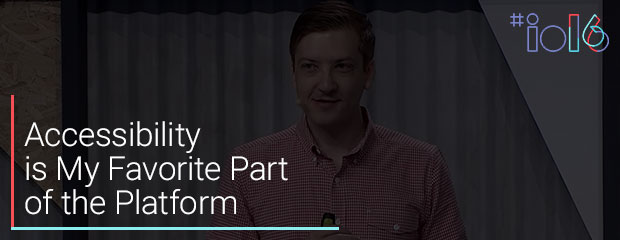 Accessibility is My Favorite Part of the Platform
Accessibility is My Favorite Part of the PlatformGoogle I/O 2016
May 19th, 2016
My favorite part of my job is when I get to work on accessibility. I see this as removing uncertainty and anxiety from people’s day, and helping them access the information they need. But working with accessibility can be frustrating, especially when you feel like you’re fighting the platform instead of working with it.
Read More >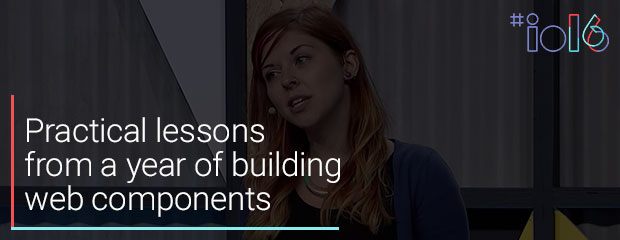 Practical lessons from a year of building web components
Practical lessons from a year of building web componentsGoogle I/O 2016
May 20th, 2016
Web components are the new shiny thing on the web, but what makes a good web component? How do you design a useful API that works for all of your users and all of their browsers? How do you make it render quickly and how do you teach people how to use it? After a year of working on the Polymer Elements, I've made sure to make all the possible mistakes so that you don't have to. This talk is about the things I've learned from that.
Read More >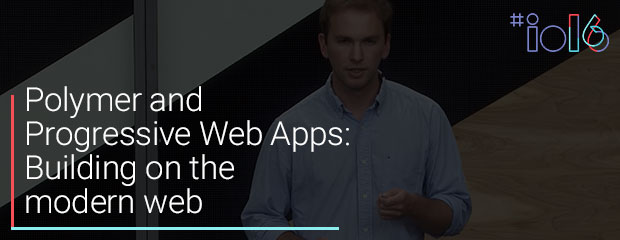 Polymer and Progressive Web Apps: Building on the modern web
Polymer and Progressive Web Apps: Building on the modern webGoogle I/O 2016
May 19th, 2016
The Polymer library, re-written from the ground up with its 1.0 release last year, helps you build composable, interoperable components to use in your web applications. We'll go over the latest features of the library, show how to use some powerful newly-released components, show how Polymer is used in practice, dive into the cutting-edge tools for shipping component-based applications, reveal a brand-new way to get started building Progressive Web Applications with Polymer, and a take sneak peek into the future of the project.
Read More >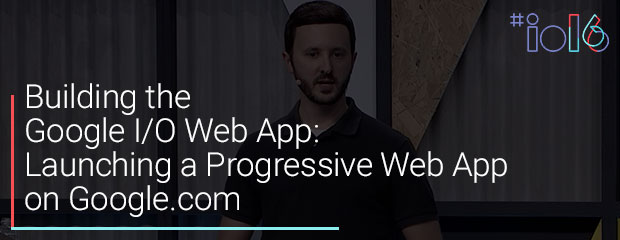 Building the Google I/O Web App: Launching a Progressive Web App on Google.com
Building the Google I/O Web App: Launching a Progressive Web App on Google.comGoogle I/O 2016
May 18th, 2016
Learn how 20% engineers at Google used the same open source tools & technologies you use to launch a Progressive Web App on Google.com. We cover how we built a real, scalable, offline-first web app powered by Polymer, web components, service workers, notifications, Google Sign-in, Firebase, new browser APIs, and more. If Google has an API for it, we used it!
Read More >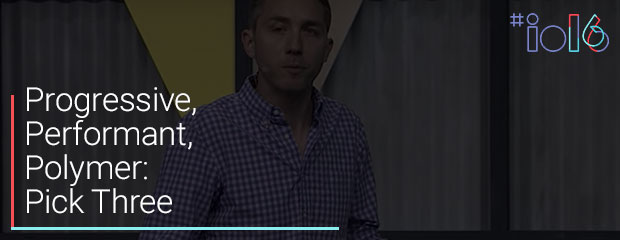 Progressive, Performant, Polymer: Pick Three
Progressive, Performant, Polymer: Pick ThreeGoogle I/O 2016
May 20th, 2016
A great webpage gives you the deeply-linked content you want, immediately, when you click a URL. A great app provides an immersive client-side experience. Building a web app that's great at both used to require a lot of effort and tooling. But a set of new technologies shipping in the modern web platform all fit together to bring this within reach for everyone. Learn how HTTP/2+Push, Custom Elements, HTML Imports, and Service Worker help you build sites that transition from lightweight entry points to full-fledged app experiences, all with great developer ergonomics.
Read More >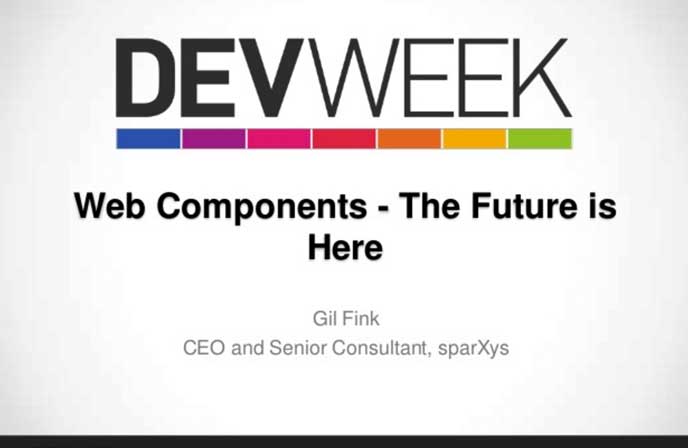 Web Components – The Future is Here
Web Components – The Future is HereDevWeek
April 20th, 2016
Web development has changed dramatically over the last few years. With the enormous amount of JavaScript libraries and the new HTML5 standard, today it is easier to create rich Internet applications (RIA). When building RIAs, you will probably want to reuse some of the web components you built. But how you can do that with the current state of HTML?
Read More >